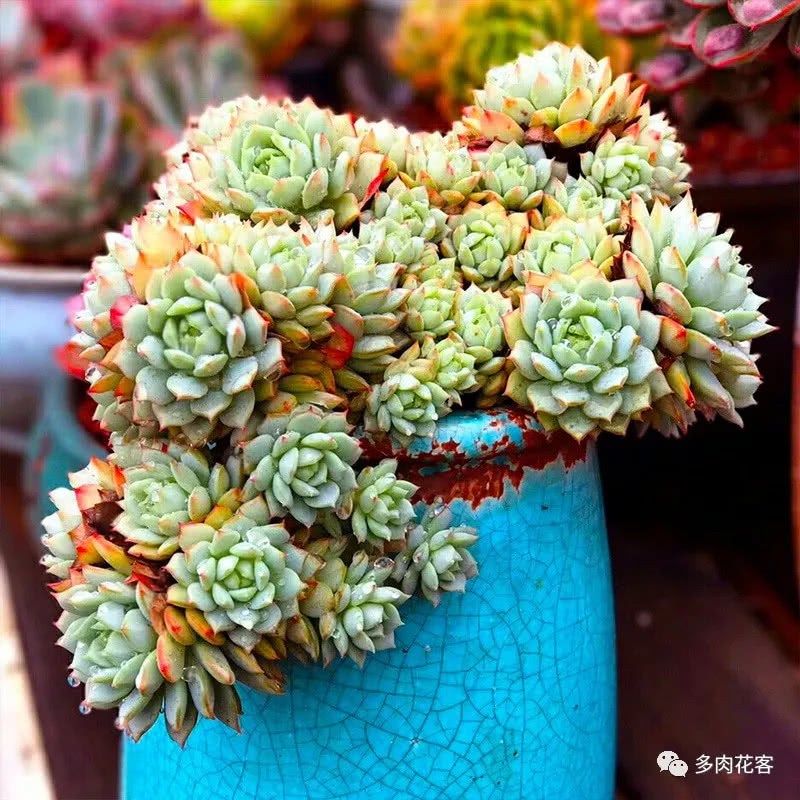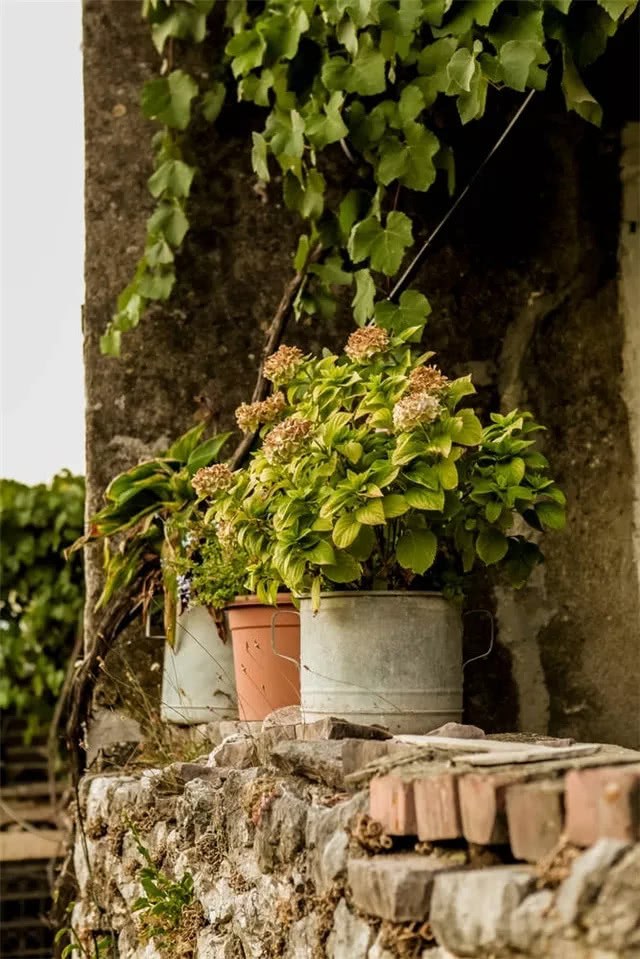The money string has blossomed. Is it going to make money?

Many meat lovers like to raise money strings, which not only means auspicious, but also the plants themselves are fresh and elegant.
Here, succulent plants say to show you the elegant demeanour of money strings.
Chinese scientific name: Qian Shuang
Latin scientific name: Crassula marnieriana
Plant families and genera: crassulaceae, green lock dragon genus
Growth characteristics: winter type species
Illumination index: proper shade in summer to avoid hot sun exposure
Watering index: during the growing period, it is appropriate to keep the basin soil moist and avoid stagnant water.
Fertilization index: the mature thin liquid fertilizer can be applied every 15 days or so during the growing period.
Summer overwintering: summer > 35 ℃ shade, winter
Propagation method: cutting
Distribution: originally from South Africa, cultivated in many places in China.
Growth environment: like sufficient sunshine and cool, dry environment, resistant to semi-overcast, afraid of waterlogging, avoid muggy and humid.
Appearance features: the stem is erect, the leaves are round, triangular and thick, opposite, the upper and lower leaves are crossed and arranged closely, and the leaves are usually green. Under a certain temperature difference and light, the leaf margin is easy to turn red, bloom from April to May, and grow at the tip. Florets star-shaped, white.
The origin of the name
Money string, named because the plant resembles a string of ancient coins, is one of the most popular small succulent plants. Its plant type is strange, exquisite and lovely, the color is bright and pleasing to the eye, suitable for planting in small craft pots, and can also be matched with strange stones to make small bonsai of succulent plants, decorating desk, windowsill and other places, fresh and elegant, full of interest. It can also be planted in a pot with other succulent plants to make a combination of potted plants or horticultural landscape boxes.
Appearance feature
Perennial succulent herb, the plant is subirrigated about 60 cm high, potted can be controlled in the 20cm, with small branches, the stem is slightly woody after the fleshy stem. The leaves are grayish green to light green, and the leaf margin is slightly red, which is more obvious in the cool season from late autumn to early spring, when the sun is sufficient and the temperature difference between day and night is large. The leaf blade is oval-triangular, without petiole, the base is connected, the young leaves are overlapped up and down, and there is a little interval between the old leaves. The leaves are 1.5-2.5 cm long and 0.9-1.3 cm wide. The flowers are white and open from April to May.
Cultivation and management
The growing period from September of each year to April and May of the following year should be given sufficient sunlight, if the lack of light will make the plant grow too long, the distance between leaves and leaves will be lengthened, so that the plant type will be loose, and the red color of the leaf edge will decrease, affecting the appearance.
After May, with the increase of temperature, the plant growth is slow or stops completely, which can be maintained in a well-ventilated place, put on a sunshade net or placed under the eaves without direct sunlight, so as to avoid hot sun exposure. During the growing period, it is appropriate to keep the soil moist, but to avoid stagnant water, otherwise it will cause plant root, base rot. Mature dilute liquid fertilizer was applied every 15 days or so to provide sufficient nutrients and promote plant growth. Control watering during the dormant period in summer, do not rain for a long time, and do not apply fertilizer, so as to avoid plant decay.
In addition, regular pruning and shaping should be done to keep the plant shape beautiful. Because the stem of the old plant is easy to be hollow and the fleshy leaves atrophy and fall off, the lower part of the plant is leafless, bald and ugly, so the old plant should be renewed and the new plant should be propagated.
When the growth is too crowded, the basin can be changed in spring or autumn, the basin soil requires loose and fertile, has good drainage and air permeability, and can be planted with rotten leaf soil, garden soil, coarse sand or vermiculite mixed culture soil.
Reproduction method
The propagation of Rhodiola can be cut in the growing season from September to May of the following year.
Stem insertion: cut the leafy stem segment with strong growth, the length requirement is not strict, but there should be 2 nodes (two pairs) of leaves. In order to prevent decay, it should be hung for 1 to 2 days, and after the wound is dry, it is inserted into the rotten leaf soil mixed with sand or vermiculite, and it is easy to take root after maintaining a little moisture.
Leaf cutting: cut the strong and mature fleshy leaves and put them flat on the sand or vermiculite after 1 to 2 days, pay attention to make the base of the leaves combine closely with the cutting medium, and then keep moist, and there will be new roots and buds growing at the base of them in about 20 days.
Pest control
The main disease of money string is Botrytis cinerea. At the initial stage of the disease, sterilization drugs such as methyl topiramate, carbendazim and chlorothalonil can be sprayed, and its concentration can be referred to the instructions of the drug or the text description of the outer package.
On the other hand, there are whiteflies, which can be killed with related pesticides.
How's it going? did the graceful money string get to you?
- Prev

Ordinary succulent plants make the most perfect old stakes.
TP, also known as Tibby, is a cross between quiet Night and Chihuahua. Allen is said to be a good sister of peach eggs, but she is easier to serve than peach eggs. Onsno, it is easy to produce jelly yellow succulent, reproductive ability.
- Next

Huahua always gets sick, don't be afraid to find out the cause, gardening rookies know the right medicine.
In the plant kingdom, almost every plant will be infected with diseases and insect pests, but some of the performance is not obvious, the harm of diseases and insect pests is lighter. This is the same as thousands of bacteria living in our human bodies. Oh. As soon as we talk about diseases, insects and bacteria.
Related
- Wuhan Hospital Iron Tree Blooming Result Was Instantly Frightened by the Gardener Master
- Which variety of camellia is the most fragrant and best? Which one do you like best?
- What is the small blue coat, the breeding methods and matters needing attention of the succulent plant
- Dormancy time and maintenance management of succulent plants during dormancy
- Minas succulent how to raise, Minas succulent plant pictures
- What are the varieties of winter succulent plants
- How to raise succulent plants in twelve rolls? let's take a look at some experience of breeding twelve rolls.
- Attention should be paid to water control for succulent plants during dormant period (winter and summer)
- Watering experience of twelve rolls of succulent plants
- Techniques for fertilizing succulent plants. An article will let you know how to fertilize succulent plants.

